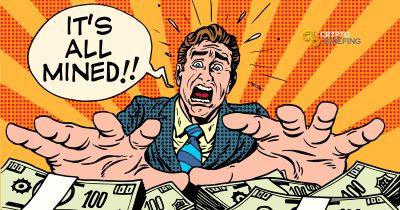Instamines Make Founders Rich But Stifle Crypto Adoption

Share this article
Two recent headlines have drawn attention to crypto’s adoption problems.
The first appeared in the New York Times, and was widely circulated by crypto-skeptics. “Now comes the hard part: persuading people to use XRP for something other than speculative trading,” Nathaniel Popper wrote. “…almost no transactions are happening, other than on virtual currency exchanges where people bet on their price.”
Also in the news (in marginally less distinguished pages) was another of Tron’s celebratory money-burnings. To felicit its “Independence” from Ethereum, the company behind the eleventh largest crypto torched a billion of its own tokens. “This may set the record,” the Tron Foundation wrote, “for the most amount of money destroyed in human history in celebration of a historic moment.”
(For the record, the KLF purportedly burned £1M on the Scottish island of Jura, after their hit single ‘What Time Is Love’ was a worldwide sensation.)
This isn’t the first time Justin Sun made a spectacle of burning money. It probably won’t directly affect the price, since the tokens were not circulated and they represent a tiny fraction of Tron’s huge budget.
Ripple has not tried the bonfire method yet, but the company has sealed billions of dollars in timelocked contracts.
This illustrates one of the pervading problems for minerless currencies. Despite sophisticated technology which is in many ways superior to Bitcoin, the newest coins are trying really hard to distract everyone from noticing that the creators got the biggest shares.
Auric Goldfinger (Shockingly) Proposes Gold Standard
Suppose an eccentric billionaire showed up in your town and started promoting a return to the gold standard. He’s making his way through the shops, paying for everything in doubloons, and haranguing people to vote for Ron Paul.
Even if you buy into his argument that gold is the most perfect form of money, you might be a bit put off to learn that he owns the town gold mine.

That’s why newer coins are still struggling to find a use other than speculation. Unlike Bitcoin and Ethereum, there’s no proof-of-work for Ripple and Tron: they just *poofed* into existence, right into the founders’ wallets.
It’s as if Ripple is trying to persuade everyone to switch to the gold standard, right after they discovered a rich vein. Meanwhile, EOS* is telling everyone that silver is the best currency, and they have a corner on the silver mines, and Justin Sun was around the other day showing off the shiny pennies from his new copper mine.
Even if one those currencies is objectively better than the alternatives, it’s a hard pitch when the salesman is also the owner.
The Fix: Decentralize Your Budget
This isn’t to suggest that Ripple is secretly run by Scrooge McDuck, but it’s hard to avoid the comparison when they have swimming pools full of money.
As we’ve reported before, half of all Tronix belongs to only three addresses, and Ripple’s distribution isn’t much better. Although those funds are presumably earmarked for various foundations and development projects, both currencies are charted under the direction of a single company.
But what if, instead of on-air giveaways, Ripple Labs decentralized its hold over XRP tokens?
What if, instead of burning extra tokens, Justin Sun put Tron’s extra funds in a user- or SR-controlled DAO and let the Tron community decide how to spend them?
That’s the system which Dash—which was also tainted by a premining scandal—has adopted. One tenth of its mining rewards are allocated to a community-controlled treasury, with major stakehodlers voting on how it is to be spent: sometimes on bug bounties, promotions, new wallets, and occasional boondoggles.
It might help with some other problems as well. In the Times article mentioned above, Popper cites a number of experts who comment on how Securities regulations are hindering XRP’s growth: “Any time you are putting XRP to work to defend it or buy good will, you are going to hurt your case that you aren’t a Security.”
Ripple Labs is still in a Security grey area, because the XRP token is still under the control of a central organizer. But a Ripple DAO would not be a central organizer, and the SEC has publicly stated that decentralized bodies are essentially in the clear.
We don’t expect this idea to catch on anytime soon. But if you want a market economy to develop, you’re going to have to abandon central planning.
*EOS is not, properly speaking, an instamine, since new tokens are being created. However, it does have a very unequal token distribution.
The author is invested in Bitcoin, Ripple, and other currencies mentioned in this article.
